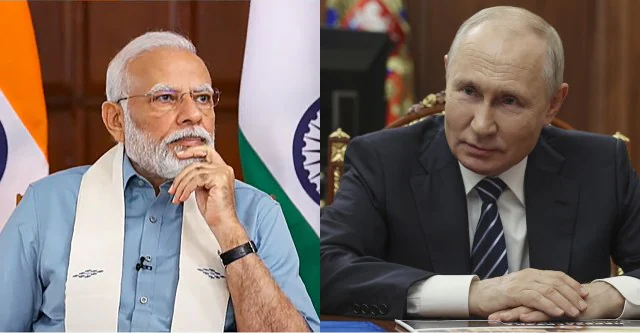In the theater of great power politics, timing often speaks louder than words. On Monday, just days after his high-profile summit with U.S. President Donald Trump in Alaska—and hours before Trump’s meeting with Ukrainian President Volodymyr Zelensky—Russian President Vladimir Putin picked up the phone to call Prime Minister Narendra Modi.
For India, the message was clear. Modi reiterated New Delhi’s consistent position on the Ukraine war: a call for peace and dialogue. Posting on X, he thanked “my friend, President Putin” for sharing insights from his talks with Trump, adding that India “supports all efforts” to resolve the conflict and looked forward to continuing exchanges.
But this conversation went beyond pleasantries. According to the official readout, Modi and Putin also touched on broader bilateral cooperation, a reminder that India–Russia ties remain resilient even under global pressure.
What Putin Shared
During the call, Putin briefed Modi on his Alaska meeting with Trump, which Washington had framed as part of its push for a Ukraine ceasefire. The summit ended without a deal but with Trump proclaiming “big progress.” He later wrote that all sides agreed the ultimate solution should be a “Peace Agreement, not just a Ceasefire Agreement” that could collapse under pressure.
Trump’s next step: hosting Zelensky at the White House on Monday alongside European leaders. The Ukrainian president remains wary, warning that Moscow “does not want peace” despite Trump’s optimism.
India and Russia on Trump’s Tariff Radar
Looming over all this diplomacy is Trump’s trade offensive. Last month, he slapped a 25 percent tariff on India, accusing New Delhi of “very high tariffs” on American goods and punishing its purchases of discounted Russian oil. Within a week, he doubled down—announcing another 25 percent levy. India now faces a crippling 50 percent tariff rate on its exports to the U.S.
The tariffs reflect Trump’s strategy of tying together trade, alliances, and geopolitics. Russia, too, has come under pressure, but for India the message is particularly stark: its balancing act—buying cheap Russian energy while courting U.S. investment—may prove harder to sustain as Washington hardens its stance.
In the end, the sequence of events—a Putin–Modi call, a Trump–Putin summit, and a Trump–Zelensky meeting—underscores how India has become an indispensable part of the diplomatic equation. Yet it also highlights the risks: New Delhi is now caught between friendship with Moscow, partnership with Washington, and a tariff war it can ill afford.








